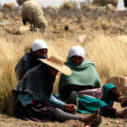
Search
Articles

The Multidimensional Poverty Index: Rethinking Measurement, Improving Governance
The Multidimensional Poverty Index (MPI) is an attempt to reconceptualise the measurement of poverty to acknowledge that, while income is a necessary element, it is by no means a sufficient gauge of social well-being. It also recognizes that a simple poverty headcount is not enough; the depth, persistence, and complexities of poverty must also be understood.

Two Key Aspects to Tackle Poverty in Its Many Dimensions
We now know that national multidimensional poverty indices (MPIs) not only measure poverty but are also effective tools for poverty reduction. There are two requirements for this lesson learned to be put into action. The first is that MPIs must generate good information and, for this to happen, their technical implementation must be rigorous, nonpartisan, frequently updated and based on indicators that can be impacted through direct action. The second is that they must be approved by and implemented with the full support of the president or top leadership of the country.

Rebooting the Global MPI
The year 2018 turned out to be one of the most demanding yet stimulating years for the OPHI team. One key achievement for the team was the collective effort in revising the global Multidimensional Poverty Index or MPI – an internationally comparable measure of acute poverty for developing countries. The motivation for the revision was the progress made in terms of data availability for measuring human development in the last decade. For this, we must acknowledge the outstanding work carried out by global micro-data providers such as the Demographic Health Survey (DHS) team and the Multiple Indicators Cluster Survey (MICS) team.

Is There Poverty in Germany?
Can we talk meaningfully about poverty in an advanced economy like Germany? And if so, what does poverty look like? Or is poverty really something that societies leave behind once they are ‘developed’? Critics argue that the official German poverty measure, which follows a relative income approach, does not reflect real poverty.

Andhra Pradesh Becomes the First Indian State to Adopt a Multidimensional Poverty Index
The Indian state of Andhra Pradesh published the first edition of its multidimensional poverty index (MPI) report this year in March. This pioneering venture made Andhra Pradesh the first state in the country to have undertaken a project exclusively to estimate an MPI at the state and district level, disaggregated by social categories and urban-rural areas, using the data collected through a household survey conducted specifically for this purpose.












